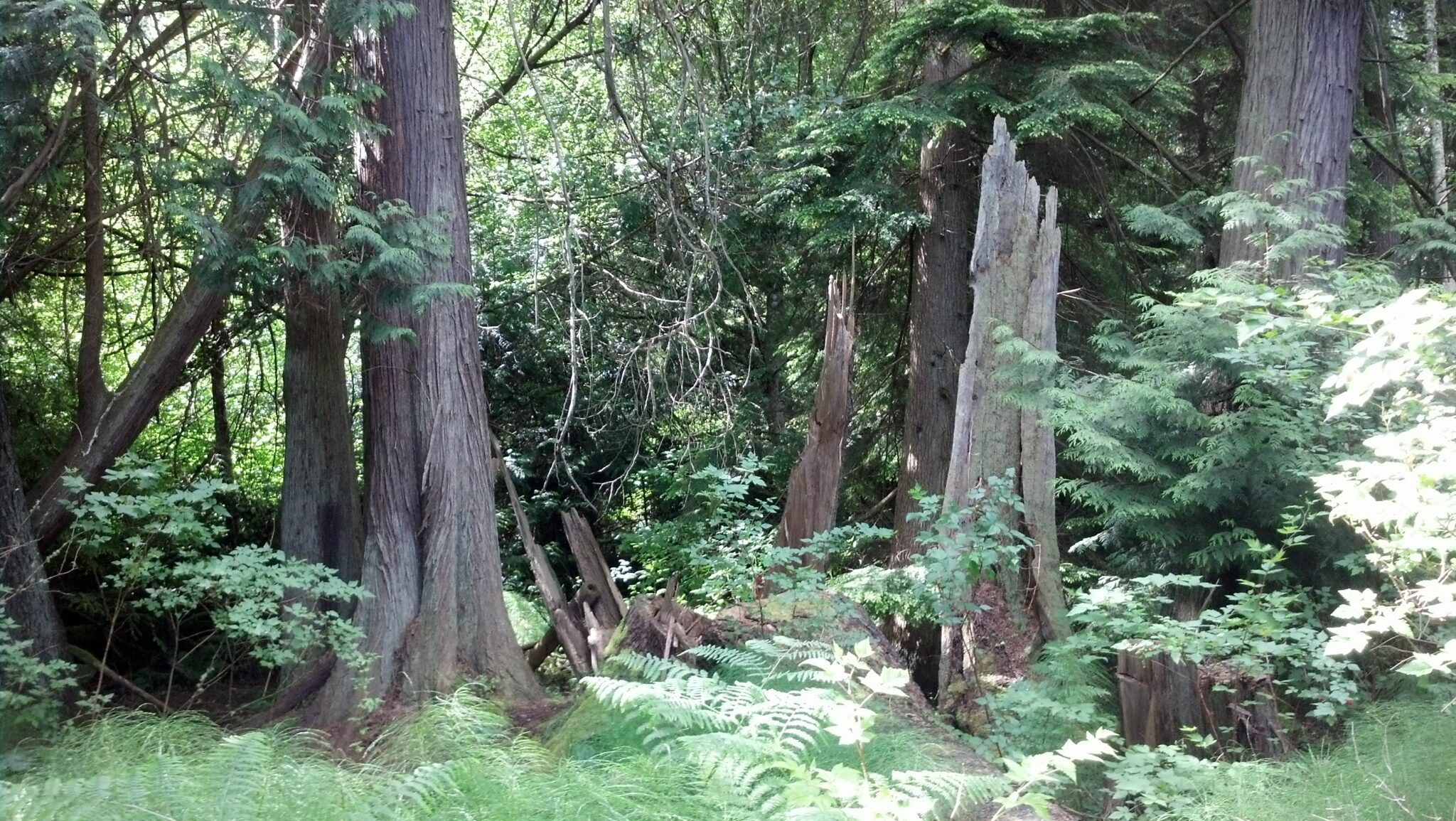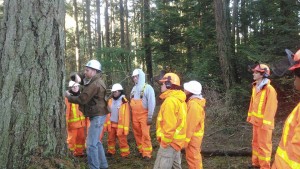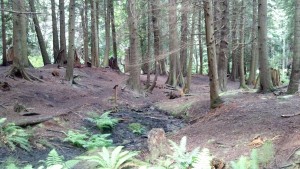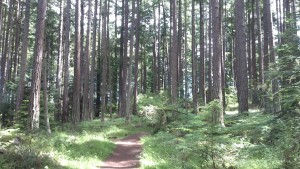Member Spotlight: Orkila showcases ecological forestry

Along the rocky shores of Orcas Island, YMCA Camp Orkila is a special place where the forest meets the sea. Campers describe the iconic Northwest destination as magical, Neverland, and Oz.
The YMCA offers camp programs by summer and outdoor environmental education programs in the spring and fall, serving more than 17,000 campers and students each year. The iconic camp is a San Juan destination for fun, outdoor exploration, and learning. It’s also on its way to becoming a showcase demonstration forest for ecologically-based stewardship.
Camp Orkila is a Conservation Member of NNRG’s Northwest Certified Forestry program, stewarding more than 170 acres of forest within the camp and an additional 116 acres on nearby Satellite Island. The composition of these woods are representative of present-day island forests: second growth Douglas-fir trees grew after most of the island was logged in the late 1800s and early 1900s to supply the lime kilns on Orcas and San Juan islands. Near seeps and wet areas are groves of western redcedar, red alder and Oregon ash, and on the rocky balds and dry south-facing slopes a few Oregon white oak continue to grow.
The San Juans are in the rain shadow of the Olympic Mountains and the islands are home to thin rocky soils – thus they exhibit dry site conditions and natural vegetative communities more in common with the forests east of the Cascades and the oak woodlands of the Puget Trough. Frequent fire was once a part of the ecology of the islands, but has been suppressed with increases in development and population.
Since the timber harvest days of the early 1900s, most island forests have grown back in the absence of fire and are now densely stocked with Douglas-fir, some shade-tolerant grand fir, and the occasional shore pine or lodgepole. Without natural agents of change, the forest is at great risk for a catastrophic fire, has decreased in productivity (growth rates, diversity of species), increased susceptibility to disease, insects, and drought, and overall is on a slower pace to develop old-growth characteristics (big trees).
For more than 100 years, Orkila’s only forest management has been for public safety. Camp managers have periodically removed danger trees from around cabins and other public-use facilities – using this material for firewood. Over time the forest has changed and started to stagnate; and in recent years Orkila’s staff observed more declining trees and minimal sign of plants or young trees in the understory.
In 2013, Orkila’s staff started to attend classes hosted by NNRG, Rain Shadow Consulting, and Rich Harvey. They learned about forest development and ecological processes experienced in the San Juans. In looking around Camp Orkila, managers soon saw the need to shift to a more active stewardship approach to help improve the health of their beloved forest. They signed up for the Environmental Quality Incentives Program to hire a forester to develop a forest management plan (also called a Conservation Activity Plan).
Since developing the plan, Orkila has taken action and started to thin suppressed and dying trees from the forest. They’ve hired Americorps volunteers to come in and reduce fuel loads in the woods. This restoration thinking – or precommercial thinning – is helping light reach the forest floor as well as building up a supply of firewood.

Last year, Orkila hosted NNRG’s precision tree felling and yarding courses and WSU Extension’s Forest Owners Field Day. The camp was able to sell sawlogs from the felling course to a local mill. Orkila is on a course to steward their forest for better productivity and diversity, help show their neighbors what’s possible, and helped the forest grow to its large and magical potential.



Leave a Reply